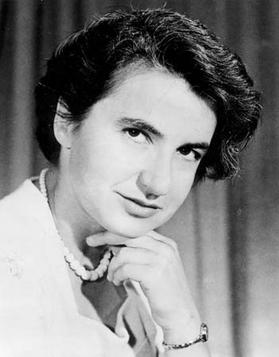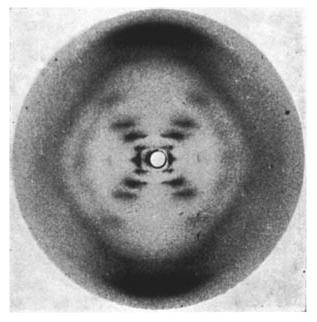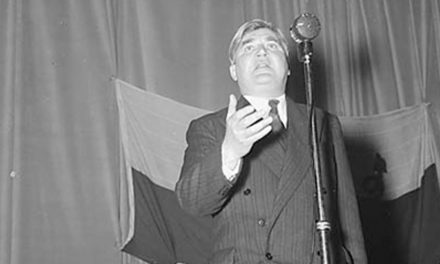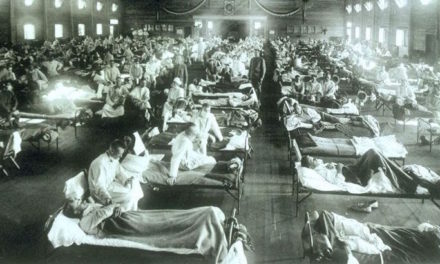Rosalind Franklin is one of the most controversial female figures in the field of science. Her X-ray diffraction work played a vital role in the discovery of the DNA double helix, yet she did not receive the acknowledgement that she deserved at the time. Her life was tragically cut short, and she was never nominated for a Nobel Prize, the honours instead being granted to Watson, Crick and Wilkins, and it is only recently that she has gained posthumous recognition of her incredible discovery.
Early life and studies
Rosalind Elsie Franklin was born in Notting Hill, London on 25th July 1920. Her father, Ellis Arthur Franklin, was an affluent London merchant banker, who taught at the city’s Working Men’s College. She displayed outstanding intellect from early childhood, and by the age of 15, she had already decided that she wanted to pursue a career in science and become a chemist.
She passed her matriculation with six distinctions in 1938, earning a place to study chemistry at Cambridge University. In 1941, she was awarded Second Class Honours in her finals. After graduating she worked for a short while at Cambridge, before accepting a job in the coal industry, where she spent time investigating the structure of coal. It was this work upon which her PhD thesis was based – “The physical chemistry of solid organic colloids with special reference to coal.”
X-ray crystallography
In 1946 Franklin relocated to Paris and began working at the Laboratoire Central des Services Chimiques de l’Etat in Paris. It was here that she met the X-ray crystallographer Jacques Mering, who would become a mentor to her in this field. He taught her the practical aspects of X-ray crystallography, and it was these skills that would later play a vital role in the discovery of DNA.
In 1950, Franklin was awarded a three-year Tuner & Newall Fellowship to work at King’s College London. She began working in the biophysics unit there in January 1951, directed by John Randall. The laboratory was unusual for the time, with 8 of the 31 researchers working there being female, and some of them occupying senior positions.
Initially, Franklin had been appointed to work on the 3-dimensional structure of proteins, but Randall redirected her to work on DNA fibres instead, following some recent developments in the field. This recruitment to the DNA project resulted in unforeseen friction between Franklin and another research scientist, Maurice Wilkins. Wilkins was away from the laboratory at the time of her appointment, and when he returned he misunderstood her role, treating her like an assistant instead of a peer. Although Wilkins eventually acknowledged his mistake, the relationship between the two would never recover and would always remain strained.

A photograph of Rosalind Franklin circa. 1950s, image sourced from Wikipedia
Courtesy of Wikimedia Commons
The most important photograph ever taken?
Working with her student Raymond Gosling, Franklin applied her expertise in X-ray diffraction techniques to the structure of DNA. Using a machine that Franklin herself had modified the pair managed to take extraordinary photographs of DNA and discovered that there were two forms of it; a dry “A” form and a wet “B’ form. One of the photographs of the “B” form became known as “Photograph 51”.
John Desmond Bernal, a renowned expert in the field of X-ray crystallography, described Franklin’s DNA photographs as being among the most beautiful X-ray photographs of any substance ever taken, and “Photograph 51” has been described by some as the most important photograph ever taken because of the role it played in identifying the structure of DNA.

“Photograph 51”, image sourced from Wikipedia
Courtesy of Wikimedia Commons
In November 1951, Franklin presented her findings at a lecture at King’s College of London. As part of her talk she stated the following:
“The results suggest a helical structure (which must be very closely packed) containing 2, 3 or 4 co–axial nucleic acid chains per helical unit, and having the phosphate groups near the outside.”
Watson, Crick and Wilkins
Franklin’s personality conflict with Wilkins would prove to be very costly to her, and in January 1953, Wilkins showed “Photograph 51” to two competing scientists in the field of DNA research without her permission. These two scientists were James Watson and Francis Crick. Upon seeing the photograph, Watson allegedly stated: “my mouth fell open, and my pulse began to race.”
Watson and Crick would go on to use what they saw in the photograph as the basis of their famous model of DNA. On March 7th 1953 they finished building the model, and they published their findings in Nature magazine a few weeks later on 25th April 1953. They included a footnote acknowledging that they had been “stimulated by a general knowledge” of her work, but not the extent to which it had assisted their progress.
Final years and legacy
During a trip to the United States in 1956, Franklin noticed that her stomach was bulging and she was having difficulties in zipping up her skirt. Upon returning to London, she sought medical attention and was scheduled for surgery on 4th September. The operation revealed tumours in her abdomen, and she was subsequently diagnosed with ovarian cancer.
She commenced cancer treatment, but decided to continue working and remained productive even when confronted with these difficult circumstances. She would publish thirteen more papers between her diagnosis and 1957. She continued to fight the cancer, but her condition deteriorated, and she tragically passed away from complications of the cancer, aged just 37, on 16th April 1958.
In 1962, four years after her death, the Nobel Prize in physiology and medicine was awarded to Watson, Crick and Wilkins for their work on nucleic acids, including the discovery of the double-helical structure of DNA. Nobel rules prohibit the awarding of posthumous nomination or splitting or the prizes more than three ways. Franklin received no mention for her contribution.
A close friend and colleague of Franklin’s, Aaron Klug, was the principal beneficiary in her will. Klug was introduced to the field of X-ray crystallography by Franklin, and he continued with her work after her death. In 1982 Klug was awarded the Nobel Prize in Chemistry, “for his development of crystallographic electron microscopy and his structural elucidation of biologically important nucleic acid-protein complexes.” This work was precisely what Franklin had started, and had she not died it is very likely she would have shared the Nobel Prize with him.







This sadly makes me question the entire validity of the Nobel prize.
Where’s the dignity, fairness and justice in all of this. Shame on Watson, Crick and Wilson. We still see this happening in present times. The use of our peers and subordinates for gain.